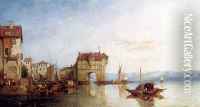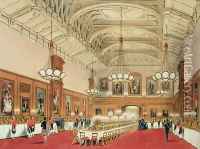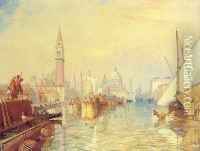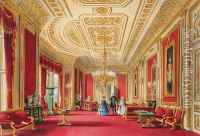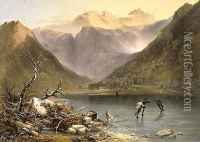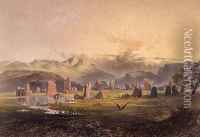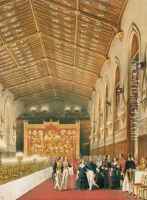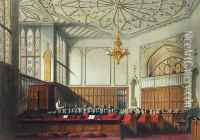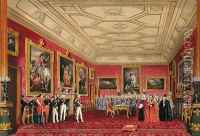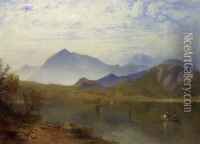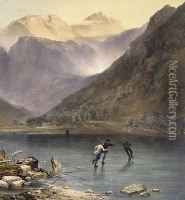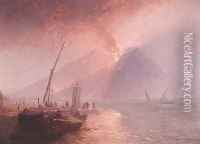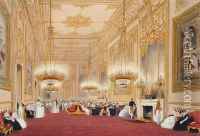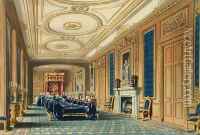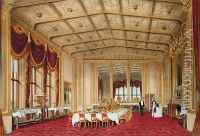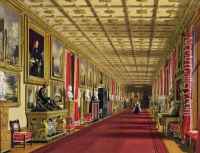James Baker Pyne Paintings
James Baker Pyne was an English landscape painter, born in Bristol in 1800. Despite not receiving a formal art education early in life, Pyne demonstrated a natural affinity for the arts, particularly in painting. He initially began his career as a solicitor, but his passion for painting eventually led him to pursue art full-time.
Pyne was largely self-taught, but he was greatly influenced by the works of J.M.W. Turner, whose style is often reflected in Pyne's own landscapes. He became adept at both watercolor and oil painting, and his work was characterized by its vivid color and atmospheric effects. Pyne was a prolific artist, and he exhibited his works at various institutions, including the British Institution, the Royal Academy, and the Society of British Artists, of which he became a member in 1833.
In the 1830s, Pyne traveled extensively throughout the United Kingdom, capturing the diverse landscapes of the British Isles. His travels expanded to the European continent in the 1840s, where he painted scenes from Italy, Switzerland, and Germany, among other locations. These travels helped to further develop his style, incorporating elements of the sublime and picturesque, which were popular in landscape painting at the time.
Despite his success, Pyne's work was sometimes criticized for being too theatrical or lacking in detail. Nevertheless, he maintained a successful career and continued to exhibit his work throughout his life. James Baker Pyne passed away in 1870, leaving behind a significant body of work that contributed to the landscape painting genre in England during the 19th century. While he may not be as widely recognized as some of his contemporaries, his paintings are still appreciated for their beauty and emotional depth.

